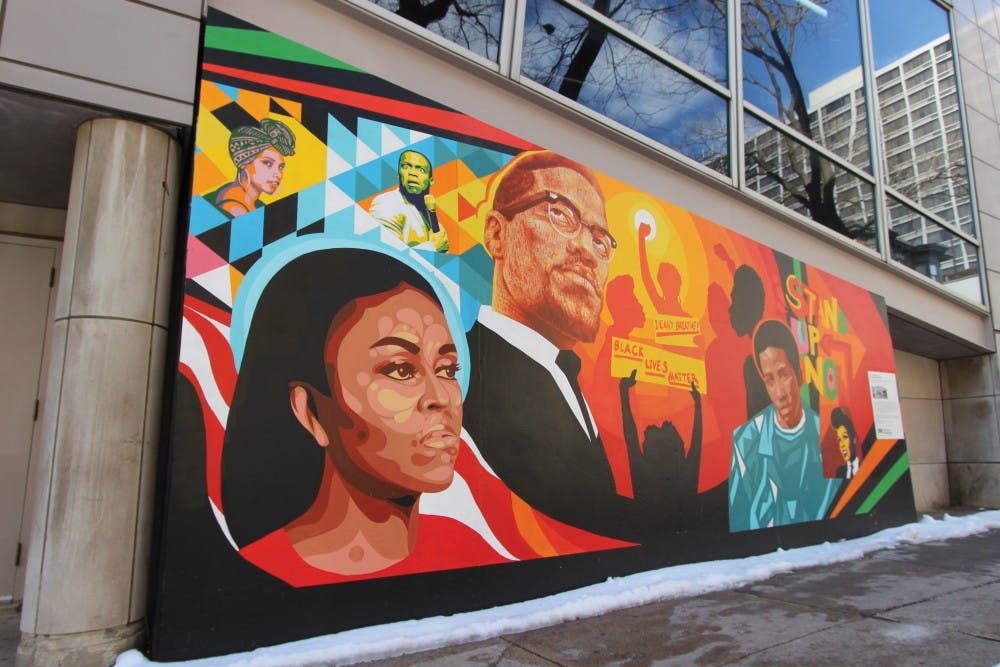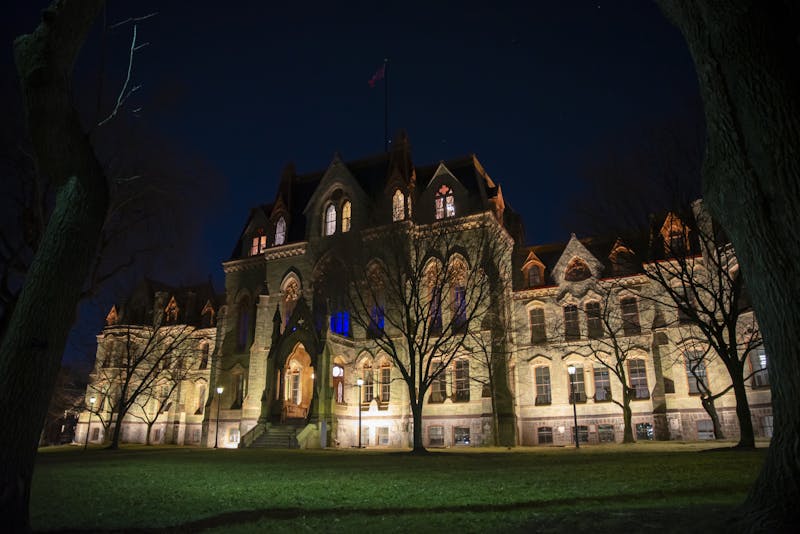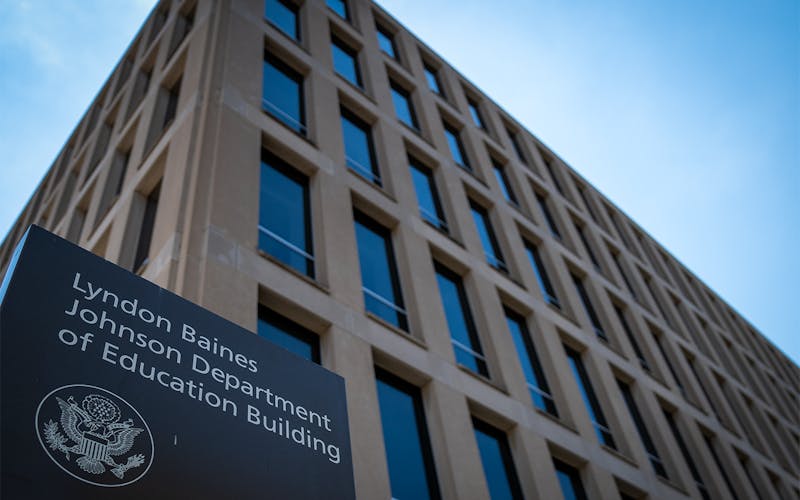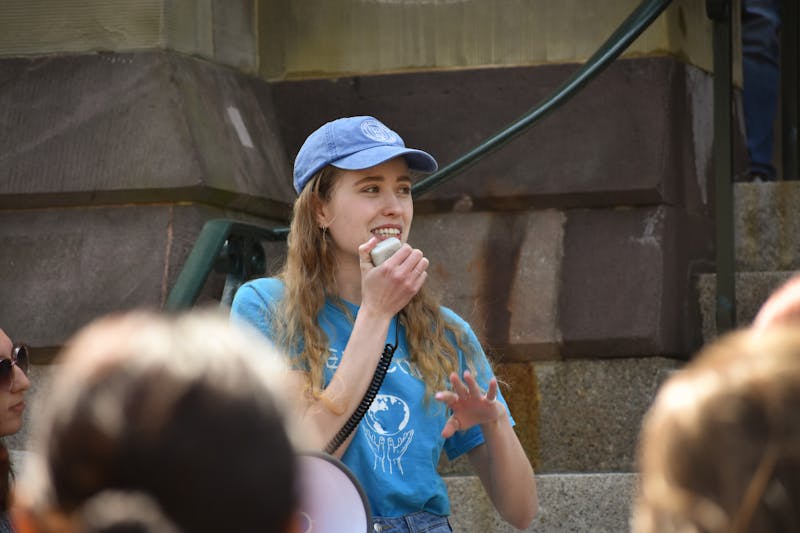
The new mural on 36th and Samson streets displays messages that reflect the voices of Philadelphia high school students, including a painting of a "Black Lives Matter" sign.
Credit: Lizzy Machielse , Lizzy MachielsePhiladelphia is a city of murals, and one of its newest displays is right here on Penn’s campus.
Located on 36th and Sansom streets, the colorful “Wall of Respect” features African American icons — including Malcolm X, Michelle Obama, Alicia Keys, Janelle Monae, Cornbread and Kevin Hart — on the side of the Institute of Contemporary Art building. The mural is the result of intersecting efforts of the ICA, Mural Arts Philadelphia and students from Olney Charter High School.
ICA’s most recent exhibit, "The Freedom Principle: Experiments in Art and Music, 1965 to Now" examines the African American arts scene in the South Side of Chicago. In 1967, members of the movement installed the original Wall of Respect, a mural depicting African American community leaders and artists involved in civil rights, ICA Director of Public Engagement Maori Karmael Holmes said. This wall was one of the first murals in the country and inspired Jane Golden, who founded Mural Arts Philadelphia and who also teaches a class about public art at Penn, to support this type of public art in Philadelphia.
“We realized there was synergy between Mural Arts and our exhibit,” Holmes said. “Since 2017 is the fiftieth anniversary of the Wall of Respect, we discovered a wonderful confluence.”
For Philadelphia’s spin-off of the mural, displayed since December of last year, high school students from Olney selected the figures displayed, said Philip Asbury, the mural’s project manager. His department of Art Education sought to engage high school students in the project, “allowing youth to update the concept of the Wall of Respect.”
The Olney students chose to paint people who they considered “heroes,” resulting in a diverse group of icons. “The mural kind of represents cross-genre, that everyone can fight oppression through their own skills," Asbury said. "Whether that is laughter, or song lyrics, or community organization. The concept of the mural highlights people who use their skills and ‘super powers’ to support their communities.”
Mural Arts has engaged Philadelphia communities in public art projects since 1984, when the program first rerouted the efforts of graffiti artists to murals. Nowadays, the program is the largest public art program in the United States and organizes up to 100 projects each year. Asbury said its Art Education department specializes in letting Philadelphia’s younger population collaborate, working with youth at 29 different sites around the city.
Asbury finds the project gratifying. “It is cool to give young people a variety of personalities and heroes to help inform their own activism and own crafting of their futures,” he said.
Both the new Wall of Respect and "The Freedom Principle" exhibit confront social issues of the past and present. Holmes believes that the connection between the mural and the museum exhibit is strengthened by a “similar tone” about politics.
“Unfortunately, some of the political issues of 1967 are still relevant in 2017, so I think the students deciding to include a Black Lives Matter protest sign in the mural is very similar to anti-war and social justice issues that people were fighting for in 1967,” she said.
Willis Humphrey, the artist of the mural, said that the Wall of Respect’s theme is “relevant.”
“I love being able to do work that speaks to social issues and gives a voice to people and demographics that may not be heard everywhere,” he said.
The Daily Pennsylvanian is an independent, student-run newspaper. Please consider making a donation to support the coverage that shapes the University. Your generosity ensures a future of strong journalism at Penn.
Donate






